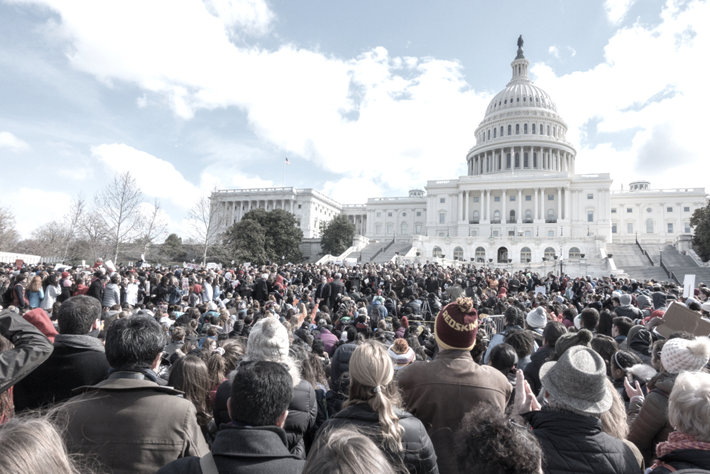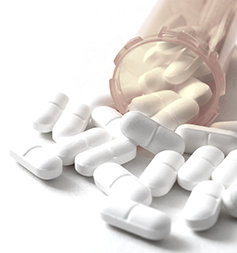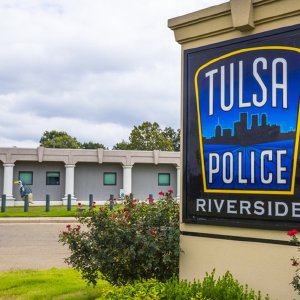The Addiction Epidemic,
U.S. Politics, and Our Way Out

When we examine a problem as big as drug and alcohol addiction across the U.S., we need to come at this from every angle possible. Drug and alcohol addiction in the U.S. has reached epidemic-level proportions at this point, a threatening and crippling disaster to our public health, our economic viability, and even our national security.
According to the Centers for Disease Control and Prevention, more than eight-hundred people die from drug overdoses every day. Some experts believe that the problem will continue to increase for years before it peaks. And while tens of thousands of Americans die from drug overdoses every year, millions more suffer from addiction every year too. (CDC)
A Problem Like No Other
Drug and alcohol addiction has grown to such a considerable scale that it is not only a risk to our public health, but this problem is now a danger to our national security and our economy. While the over-prescription of legal, opioid pharmaceuticals certainly played a role in the beginning and still does, now the drug problem has intensified with the arrival of cheap heroin, other narcotics, and synthetic opioids. These hard drugs are generally supplied by foreign countries, like Mexico and China.
In an effort to address this rapidly expanding problem, U.S. political leaders have increased their own efforts to crack down on drug use and drug crime in their own districts. Laws have been written which limit the number of prescriptions that can be written in the U.S. Effort has been made to assist Mexico and China in cracking down on synthetic opioid production in those countries.
But our political leaders do not always take the right course of action in addressing the epidemic. For example, our current political leaders are moving towards incarcerating drug offenders in the blink of an eye. Incarceration is never a workable method of treatment for helping a drug user to come down off of drugs and get clean. In the past, some political leaders have been more inclined to treat drug users and alcoholics by sending them to drug and alcohol rehab centers instead of jail. This is a better approach.
What Set Us Off on the Wrong Foot

What set us off on the wrong foot with drug and alcohol addiction in the first place? Obviously, opioids were the primary instigator of the drug problem that we are mired in today. Opioids, (whether in the form of legally manufactured opioid pain relievers or in the form of illegal narcotic opioids like heroin or synthetic opioids) not only cause the vast majority of overdose deaths across the States, but they are also responsible for the majority of crime and socioeconomic problems that are directly connected to drug use.
Towards the end of the 1990s, the U.S. medical industry began to prescribe opioid pain relievers like oxycodone, hydrocodone, and morphine to treat various conditions of pain. In the beginning, opioids were only prescribed for the treatment of major health issues like surgery or cancer. But in the last fifteen years, doctors have begun prescribing high-strength opioid pain relievers for minor health conditions like back pain, joint pain, headaches, and mouth/jaw pain. This was the wrong direction to go in.
Prescribing high-strength opioids for such low-priority health conditions is what got us into the addiction epidemic that we are in today. Doctors essentially gave powerful and mind-altering substances to patients who didn’t really need them. Because these patients did not need to be on such potent and powerful drugs, many of them ended up getting addicted to those substances. In the words of New York Special Narcotics Prosecutor, Bridget G. Brennan:
“We didn’t develop an opioid epidemic until there was a huge surplus of opioids, which started with pharmaceutical drugs.”
And it isn’t just opioid painkillers that are creating this problem either. Heroin, a drug that was practically unheard of by the end of the twentieth century, has made a strong comeback in the form of a cheap but still potent alternative to pain relievers. Over the last several years, interest in heroin in the United States has absolutely soared, overloading the U.S. with such a supply of the drug that it has driven prices down. Today, heroin can be purchased on American streets for a third the cost it ran for in the early 1990s.

And there’s more. Just since about 2010, a new type of drug has emerged, and this one is more lethal than anything else in recorded history. We are speaking of course of synthetic opioids. Synthetic opioids are especially lethal, as they are hybrid combinations of heroin with other opioid pain relievers, heroin with fentanyl, or fentanyl combined with painkillers, or painkillers combined with other painkillers.
Fentanyl is a high-strength pain reliever that was manufactured only to be used by cancer patients and the terminally ill. It is now on the streets of middle-class, suburban America. Much of the fentanyl used and abused in the U.S. are trafficked into the United States from Chinese drug labs. Heroin is about ten times more potent than generic morphine is, and fentanyl is about fifty times more potent than generic morphine is.
We can see from this that the United States is not only overwhelmed, but our nation is overwhelmed with a multitude of different kinds of drugs, a massive plethora of variety just in the opioid category alone. And this is not the only drug that we have to worry about either. Interest in other drugs like cocaine, crack, meth, marijuana, amphetamines, and psychotropic pharmaceuticals are also increasing.
Reversing the Drug Addiction Epidemic
U.S. politics is not going to save us from the drug addiction epidemic that our nation is now smitten with. This is not a hole that the government alone can pull us out of. To truly break free from the crippling hold of drug and alcohol addiction, we need to strive for nationwide effort on all of our parts to overcome drug and alcohol addiction once and for all and for good.
Reducing a drug problem in any given area comes down to two, major efforts:
- Prevention. Prevention is the act or fact of literally preventing a drug problem from coming about in a person, family, community, town, school, church, city, etc. When we work towards prevention, we are taking actions like educating young people about the dangers of drug use and alcohol misuse. We put forward efforts towards teaching the masses about how to keep drugs out of their home. We flow more funding and support to law enforcement teams so they can crack down on drug dealing within their jurisdictions. These are all efforts towards stopping a drug problem from cropping up.
- Rehabilitation is the other factor. To truly crackdown on a drug problem, we have to put in the effort to help those who are currently addicted. The Substance Abuse and Mental Health Services Administration estimates that there are twenty-five-million Americans who are hooked on drugs and alcohol. Our country’s drug problem is never going to recede until our population of addicts is helped off of drugs and alcohol.
There is no doubt that the U.S. is mired in a terrible state of addiction. This epidemic will take our joint, combined effort to bring our country to the point a drug-free society.
Sources:
- https://www.vox.com/policy-and-politics/2018/3/19/17137852/trump-opioid-epidemic-plan-death-penalty
- https://www.nytimes.com/2017/10/26/us/politics/trump-opioid-crisis.html
- https://www.npr.org/sections/health-shots/2018/06/23/622692550/analysis-finds-geographic-overlap-in-opioid-use-and-trump-support-in-2016
- https://www.cfr.org/backgrounder/us-opioid-epidemic
Clinical Review by Claire Pinelli, LADC, CCS, ICAADC, MCAP


